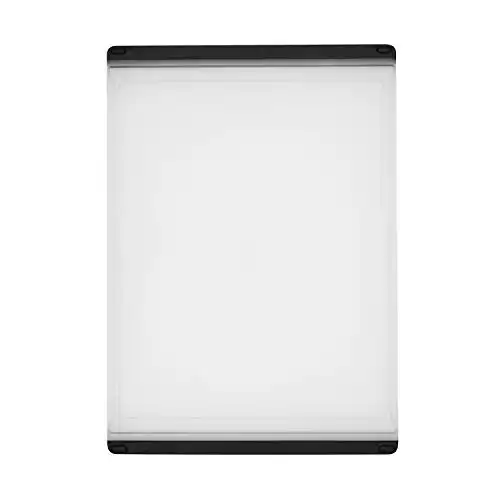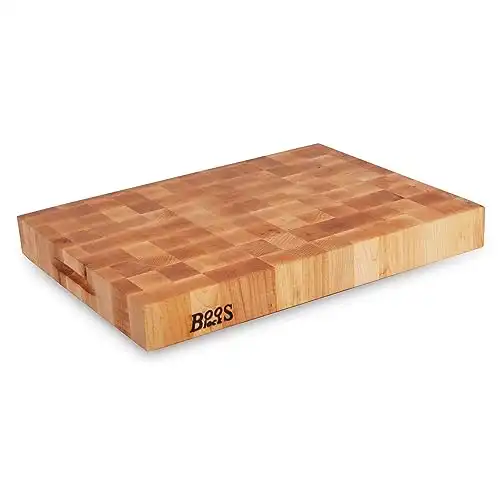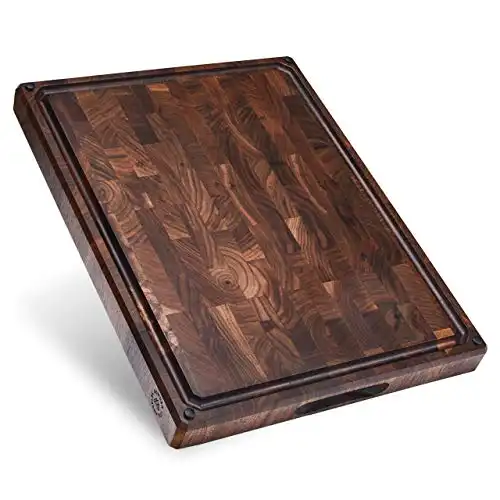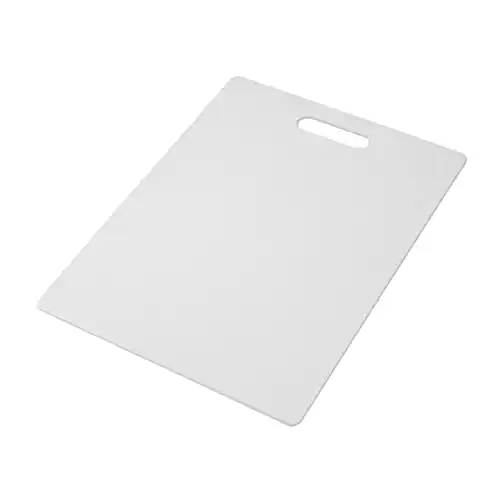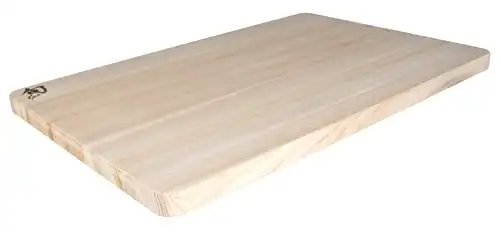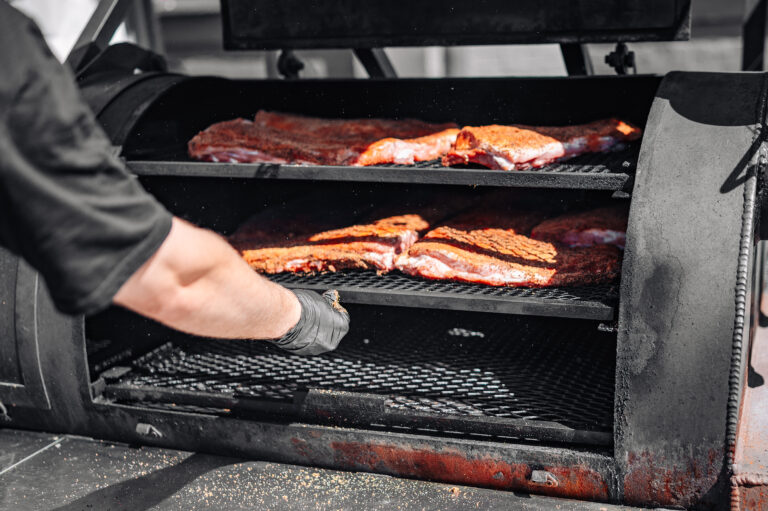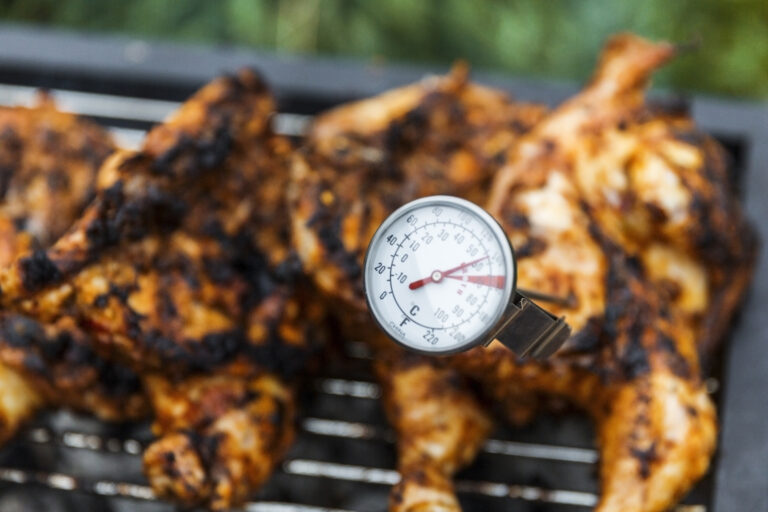6 Cutting Boards for Meat to Keep Your Kitchen Safe
Choose the best cutting board for meat by considering materials, size, price, and appearance. End grain wood and dense plastic are top choices.

Start with a quality chef’s knife and a durable cutting board, and you’re well on your way to a fully equipped kitchen. But did you know that, when it comes to preparing raw meat, there are cutting boards that you should never use?
In my decade of professional kitchen experience, I’ve had the opportunity to use every type of cutting board imaginable. And I’ve narrowed those choices down to three stellar options, and three runners up for special situations.
In this article, I’ll guide you through my decision-making process for choosing a cutting board for meat. By the time you’re finished reading, you should have a clear idea of what makes each cutting board suited to your specific kitchen & food prep needs.
|
Best Overall
|
||
|
Best for...:
Best Overall
|
Best for...:
Best Value
|
Best for...:
Best Upgrade
|
Disclosure: As an Amazon Associate, this site earns from qualifying purchases. Thank you!
1. Best Overall: Sonder Los Angeles End Grain Walnut Cutting Board
End grain wood is fairly well the gold standard for wood used in cutting boards. It’s exceptionally dense, has a gorgeous color, and will last for decades with only minor care and maintenance.
In short: If you want the best cutting board that money can buy, it has to be end grain. But Sonder Los Angeles goes even a step further with this cutting board, adding non-slip grips and a juice groove to complete the functional package.
That’s paired with an easy-carry handle that makes it quick and efficient to set up this thick and heavy-duty board. Flip the board over to its other side, and you’ll find three convenient compartments built into one edge. This makes the board doubly functional: As a cutting board on one side, and as a serving board for cheese and charcuterie on the other.
Overall, Sonder Los Angeles is offering this top-quality cutting board at an entirely fair price. I’d be happy to have this in any kitchen and give it my highest recommendation.
2. Best Value: OXO Good Grips Utility Cutting Board
If looks are less important to you than affordability, a plastic cutting board is a much less expensive alternative to a hardwood cutting board. And among producers of affordable kitchen equipment, OXO is consistently at the top of my list.
Their Good Grips line is made specifically for easy handling, with tacky grips that stay safe and stable even when your hands are covered in oil.
The OXO Good Grips Utility Cutting Board has been a staple of professional kitchens that I worked in. At under $20, it’s the densest board I’ve found and has both non-slip handles and feet for maximum stability. And at roughly 10 by 15 inches, it’s big enough to prep an entire meal with room to spare.
Being dishwasher safe is a big added benefit of going for a plastic cutting board, too. Especially when you’re cutting and prepping a lot of meat, having the high temperatures and chemicals of a dishwasher can fully ensure that you’re sanitizing your board.
I’d recommend this board to anyone looking to set up their home kitchen on a tighter budget, as well as anyone who’d prefer a lightweight and easy-to-clean board.
3. Best Upgrade: John Boos End Grain Maple Reversible Cutting Board
Though a bit pricier than my best overall cutting board featured above, the John Boos End Grain Maple Reversible Cutting Board is also just bigger in every way.
It’s thicker, with larger dimensions on each side and a hefty weight that can easily make it a centerpiece on your kitchen island.
Most notable, however, is the fact that John Boos’ board is made from sustainably sourced Northern hard rock maple wood. This is the limousine of cutting board materials, with an unbeatable density that can sharpen your knives while you’re cutting.
It’s incredibly durable, making this board an investment that you’ll be able to pass down to your kids one day. You’ll want to purchase the John Boos Board Oil and Board Cream to go along with this. Applied together, they create a seal that will keep your board in like-new condition year after year.
4. Runners Up Mevell Walnut Cutting Board
Do you love the look of hardwood, but cringe at the price? Consider buying an edge-grain cutting board like this one from Mevell. It’s still made from extra dense walnut and has a beautiful, rich color. And while it won’t keep your knives sharp like an end grain board does, it’s still quite durable and looks great in any kitchen.
5. Farberware Plastic Cutting Board
Look in any commercial kitchen, and you’ll find at least a few of these Farberware plastic cutting boards lying around.
They’re by far the most affordable cutting board for meat — and even though they tend to dull knives faster than hardwood or other plastic boards, they’re so cheap that you don’t have to worry about replacing them when they become worn.
Non-slip corners are a nice touch, too. If you need a cutting board that you don’t have to worry about getting damaged, this is the one for you.
6. Shun Hinoki Cutting Board
The super-thin blades of Japanese knives, like those from Shun, require a different type of cutting board to maintain their edges.
That’s why Shun makes their line of Japanese cypress cutting boards, which have more “give” to them than other hardwoods. If you’re a fan of Japanese cutlery, getting a Japanese cutting board to match is the best choice.
Buyer’s Guide: How to Choose the Best Cutting Board for Meat
There’s a lot that goes into choosing the perfect cutting board for your kitchen. In this section, I’ll take you through exactly what I think about before buying or recommending a specific board.
Cutting Board Material
Choosing the right material for your cutting board is essential if you’ll be using it to prepare meat. That’s because some cutting board materials are more porous than others; choose the wrong one, and it can be a breeding ground for bacteria.
With that in mind, here are the best materials for cutting boards for meat, in order:
- End grain hardwood
- Plastic
- Edge grain hardwood
End grain wood combines the best of sanitation, stability, and good looks. Plastic is easier to clean and maintain, but it’s rarely a very attractive option. Edge grain wood is cheaper than end grain, but it will dull your knife faster.
So what materials should you not use for a cutting board for meat? Any wooden cutting board made of softwood (i.e., pine) is a definite no, as it’s too porous. That goes for a bamboo cutting board as well, since it has both hard and soft areas.
Size
How big should your cutting board be? That’s a tough one to answer without seeing your kitchen and how much counter space it has (especially if building an over-sink cutting board).
But in general, the larger the cutting board you can fit, the better. That will give you more room to work as you’re preparing your meals. As a bonus, the larger the board, the heavier it will be — and the heavier it is, the more slip-resistant it will be.
Just be sure that you have a place where you can store your cutting board while it’s not in use, and you’ll be good to go. I usually take measurements for the cabinet I’ll be storing a cutting board in, and then look for the largest size that will fit.
Price
I see a lot of cutting boards in people’s kitchens that are the least expensive piece of equipment they own. Even professional chefs will often skimp on the quality of their cutting boards — while having a collection of multi-hundred-dollar kitchen knives!
But I always, always recommend that you invest a little bit extra in a high-quality cutting board. My reasoning is two-fold:
First, spending a little extra on your cutting board will ensure that it lasts much longer. Buy a cheap cutting board, and you can count on replacing it in about a year. Invest in a better board and maintain it well, though, and you’ll have a piece of kitchen equipment that lasts for decades.
Second, cheap cutting boards will dull your knives faster. That’s because their materials aren’t as dense, and may even have the chance of making small chips in your knife while you cut. Pricier boards are made of harder and denser materials and will maintain your blade’s edge much better.
Appearance
Do you have a particular aesthetic that you’re looking for in your kitchen equipment? This is where your choice of cutting board comes down to a matter of personal preference.
I love the looks of a nice wooden board made of hardwood and hate the plastic option, but that’s just me. If you’re more about function than form, a plastic cutting board for meat can be a much less expensive way to get a quality board.
Do you need a set?
Professional kitchens often have color-coded cutting boards to aid in maintaining food safety standards. This means that you’ll find a whiteboard for vegetables, a blue one for fish, a yellow one for chicken, and a red one for red meats.
But outside of a commercial kitchen, this kind of setup is more likely to lead to clutter than cleanliness. That’s why I recommend investing in one really good cutting board, rather than a set of sort of good ones.
Frequently Asked Questions
What cutting board is best for meat?
End-grain wood cutting boards and dense plastic cutting boards are the best for meat. Both of these feature tightly packed materials that help to keep your knife blade sharp at the same time they prevent the development of bacteria in the board. Avoid softer cutting boards, as these can end up with small grooves that harbor bacteria.
Are wood cutting boards safe for meat?
Hardwood cutting boards are safe for meat, but softwood and bamboo boards are not. They’re not dense enough to prevent the development of bacteria, making them hard to get fully clean and sanitized.
Is it better to cut meat on wood or plastic?
Both wood and plastic cutting boards can be effective for meat. As in the above questions, it’s a matter of choosing a very dense wood or plastic board. Check out my recommendations below for fine examples of boards made from both wood and plastic.


